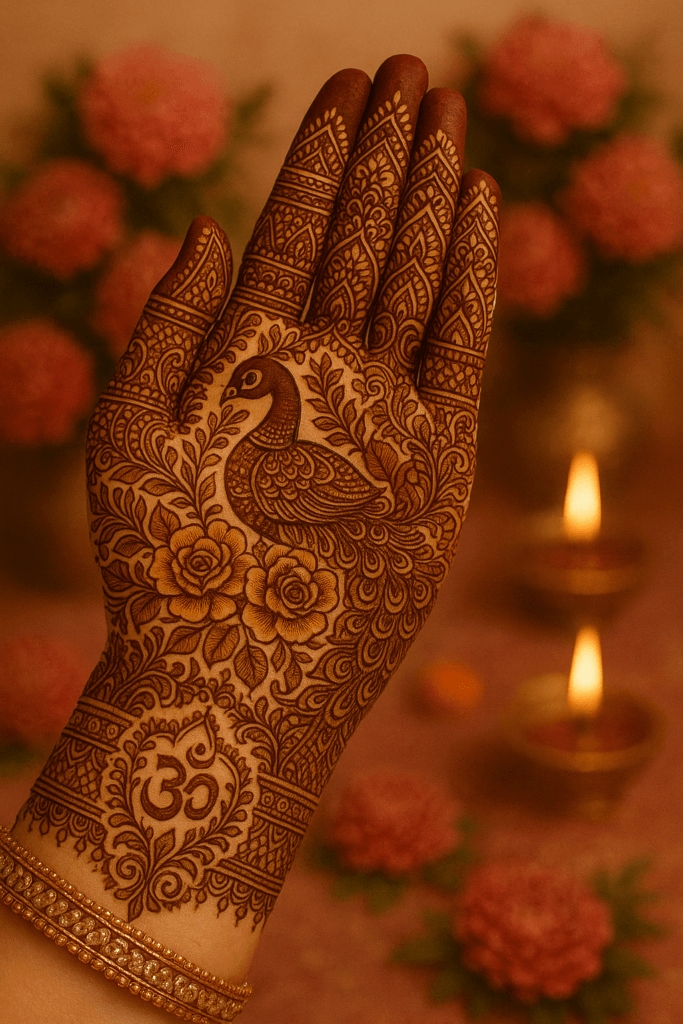Meta Description: Mehndi is not just adornment but a symbol of Indian culture, celebration, and love. Explore its historical significance, diverse designs, and easy application methods.

Mehndi: Nature’s Beauty and a Cultural Legacy
Mehndi, also known as henna, has held a special place in Indian culture for centuries. It is not just a medium to decorate hands and feet but also a symbol of auspiciousness, prosperity, and the beginning of new chapters. Whether for weddings, festivals, or religious rituals, the fragrance and intricate designs of mehndi are an integral part of Indian traditions.
History of Mehndi: From Egypt to India
The mehndi plant (Lawsonia inermis) is native to North Africa and the Middle East. Historical evidence suggests that Egyptians used it as medicine and cosmetics 5,000 years ago. In India, the tradition of mehndi became popular during the Mughal era, when queens adorned their hands with elaborate floral patterns. Today, it is a cultural identity in India, Pakistan, Bangladesh, and Arab nations.

Types of Mehndi: A World of Unique Designs
- Rajasthani Mehndi: Dense floral patterns, peacocks, and vine motifs.
- Arabic Mehndi: Geometric shapes and minimalist designs.
- Indo-Western Fusion: Blends glitter, stones, and modern patterns.
- Bridal Mehndi: Intricate and detailed designs on the bride’s hands and feet.
How to Apply Mehndi Correctly
- Ingredients: Fresh mehndi paste, sugar, lemon juice, and oil (coconut/mustard).
- Preparation: Soak mehndi powder in lemon juice and sugar overnight to create a thick paste.
- Application Tip: Use a cone to draw designs slowly. Let it dry, then apply oil to darken the stain.

Benefits of Mehndi: Beyond Beauty
- Natural Coolant: Reduces body heat in summers.
- Skin Benefits: Treats fungal infections and inflammation.
- Ayurvedic Importance: Relieves stress and headaches.
Significance of Mehndi in Celebrations
- Weddings: Hidden messages of love in bridal mehndi designs.
- Karwa Chauth: Married women apply mehndi for auspiciousness.
- Eid: The joy of “Mehndi Ki Raat” in Islamic culture.

Tips for Stunning Mehndi Designs
- Wear light-colored clothes to highlight the design.
- Avoid moisturizing hands before applying mehndi.
- Leave the paste on for 6-8 hours for a darker stain.
Interesting Facts About Mehndi
- The reddish-brown color comes from lawsone, a chemical in the paste.
- Sojat in Rajasthan is called the “City of Mehndi.”
- In some cultures, mehndi is considered “lucky” and applied on doors.
Conclusion: Mehndi, a Harmony of Culture and Art
Mehndi is not just a design but an expression of emotions. It is nature’s gift that binds beauty, health, and tradition. The next time you apply mehndi, embrace its depth and history!
Image Description for a Beautiful Mehndi Design
Visual: Intricate Rajasthani bridal mehndi on a bride’s hands, featuring peacocks, roses, and vine patterns. Delicate latticework on fingers and an “Om” symbol on the wrist. Background includes pink floral bouquets and diya lights.
Color Palette: Dark reddish-brown mehndi stain, golden stones, and soft pink backdrop.


Pingback: Apple iPhone 17 Pro: Rumored Features, Design Overhaul, and